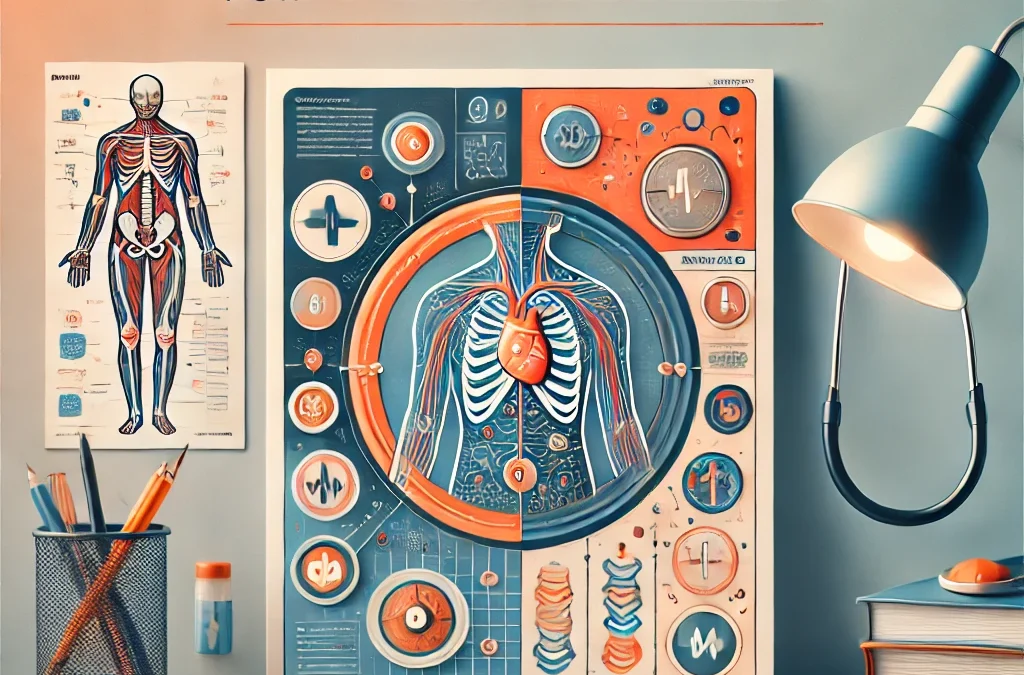Anatomy and Physiology for Medical Coding
Anatomy and physiology are essential for accurate medical coding. Understanding the structure and function of the human body ensures
that coders assign the correct codes, leading to accurate billing and better patient care.
Introduction to Anatomy and Physiology in Coding
Medical coders need a solid foundation in anatomy and physiology to interpret medical reports and assign accurate codes. These
disciplines help coders understand the relationship between diagnoses and procedures.
Overview of Human Body Systems and Their Importance in Coding
- Musculoskeletal System: Important for coding fractures and injuries.
- Cardiovascular System: Covers heart-related procedures and diagnoses.
- Digestive System: Involves gastrointestinal surgeries and diagnoses.
- Nervous System: Critical for coding neurological conditions.
Medical Terminology for Coders
Coders should be familiar with common prefixes, suffixes, and root words. Knowing anatomy-related terms helps in interpreting medical
reports accurately.
Understanding ICD-10 Codes in Relation to Anatomy
- ICD-10 codes are structured to reflect specific diagnoses and anatomical locations.
- Accurate anatomy knowledge ensures proper code assignment for diagnosis coding.
How Physiology Helps in Coding Procedures
- Physiology explains the functions behind medical procedures.
- Coders must link procedures with appropriate diagnosis codes for accurate billing.
Tools and Resources to Study Anatomy and Physiology for Coding
- Recommended books: Anatomy and Physiology for Coders.
- Interactive online courses and apps like Quizlet for flashcards.
Tips for Learning Anatomy and Physiology for Coding
- Use flashcards to memorize anatomy terms.
- Practice coding scenarios that involve body systems.
Common Mistakes Coders Make Without Proper Anatomy Knowledge
- Assigning incorrect codes due to a lack of anatomy understanding.
- Misinterpreting complex medical reports.
Benefits of Strong Anatomy and Physiology Knowledge
Strong anatomy knowledge improves coding accuracy and opens doors to specialized coding roles, such as cardiology or orthopedics.
Anatomy and Physiology in Specialized Coding Areas
- Cardiology Coding: Requires in-depth knowledge of the heart and vascular system.
- Orthopedics Coding: Involves detailed knowledge of bones, muscles, and joints.
Preparing for the CPC Exam with Anatomy Knowledge
The CPC exam includes questions related to anatomy and physiology. Focus on mastering body systems and medical terminology to excel.
Career Growth Opportunities with Advanced Anatomy Skills
Advanced knowledge in anatomy and physiology enables coders to pursue specialized certifications and take on supervisory roles.
Conclusion – Master Anatomy and Physiology for Coding Success
Mastering anatomy and physiology is essential for any medical coder. These skills not only improve coding accuracy but also pave the
way for career advancement in specialized coding fields.
FAQs
How much anatomy and physiology do I need to know for medical coding?
Coders need to have a solid understanding of body systems and medical terminology.
What are the best resources for learning anatomy for coding?
Books, online courses, and interactive apps like Quizlet are highly recommended.
Can I specialize in coding without strong anatomy knowledge?
Specialized coding roles often require in-depth anatomy knowledge.
Is anatomy covered on the CPC exam?
Yes, anatomy and physiology questions are part of the CPC exam.
How can I memorize anatomy terms effectively?
Using flashcards and practicing regularly helps with retention.


Recent Comments